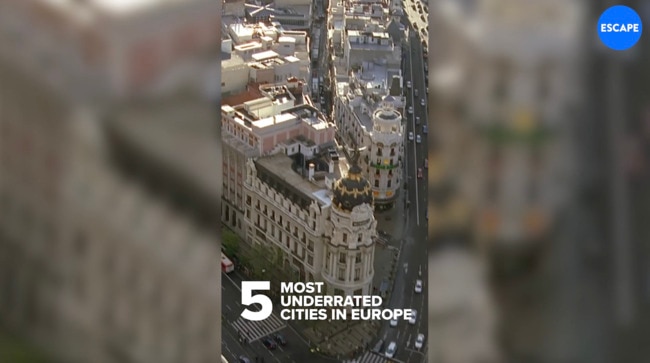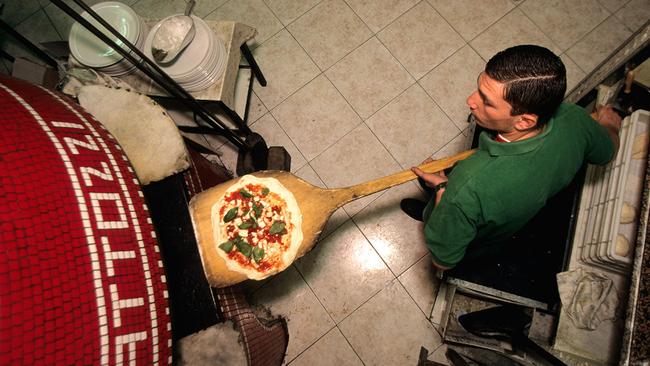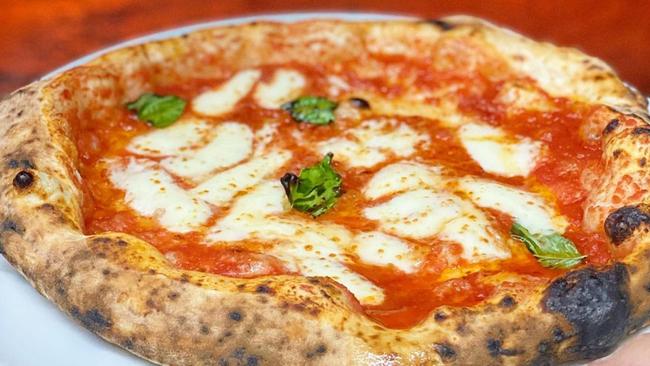Why Matt Preston said no to the world's best pizza
Naples is raucous, bawdy and a little bit dangerous – and it turns out that makes it the natural home of exemplary pizza.

Lifestyle
Don't miss out on the headlines from Lifestyle. Followed categories will be added to My News.
I swear the receptionist in the smart Amalfi hotel crossed herself when we said we were going to drive into Naples in the hope of buying tickets for a World Cup quarter-final. Even in the same region, Naples has a certain reputation.
It’s the underbelly of Italy’s mainland. Once a hub of art and culture – the city of Caravaggio no less – it’s now the city of the Camorra and Elena Ferrante’s novels of life on the breadline. Like a bad boy on a motorbike, Naples has a glint in its eye that says “here comes trouble”. That’s part of its allure. But rather than having the sullen menace of Palermo, Naples is raucous. It’s the home of coarse humour and sentimental songs like “O Sole Mio”.

Crippling unemployment and oppression of the poor have long been part of the story in this city that has been occupied by Spanish and Napoleonic forces, and ruled by Normans and Austrians. Perhaps that’s why crime is rife and there are more churches in Naples than in most Italian cities. Catholicism, football and drugs have always been the salves of Italy’s poor. Caravaggio was beaten up by thugs as he left a bar down by the docks 400 years ago just as you could be today. And the Neapolitans love “the Little Donkeys”, the local Serie A team Maradona played for, with a passion.
I loved Naples on first sight. I loved it for how the cars flowed into town along the freeway central reservation and the nature strip, three lanes becoming seven. I loved it for the madness of the taxi driver who avoided a traffic jam by taking to the pavement and driving us across the pedestrian concourse outside the railway station with nary a glance from other locals. I liked it because the tickets we bought illegally off touts weren’t fakes and we scored great seats behind one of the goals.
England were playing Cameroon. The crowd was packed with the roughest English supporters, but we were surrounded by Neapolitans. Then in trooped a squad of rifle-bearing carabinieri who formed a cordon around our section – either to protect the Naples fans from the English or, more likely, the English fans from them. These guys were the roughest of the rough – one of the most feared mobs of Serie A fans. They were a great laugh, too. We shared hip flasks and cigars and after the game they invited me and my mate to go eat pizza. We declined out of a healthy respect for their narrow, gold-toothed smiles and melted away into the crowd.

It would be 15 years before I’d return to have that pizza. Lured by chats with the True Neapolitan Pizza Association, we cruised for puffed crusts at Starita a Materdei (opened 1901), stood among the clamouring crowds begging for a table at Gino Sorbillo’s pizzeria and pleaded for just a slice at Pizzeria di Matteo (dal 1936).
Among all this puffed-dough perfection, however, it was the pizza at Mattozzi that I left Naples yearning for. Opened in 1833, this pizzeria has been slinging slices since horse-drawn carriages stopped here on the way back from balls at the old palace. Lello Surace, the patriarch, told me the secret wasn’t the dough – anyone could get the dough and oven temperature right. The secret was in the sauce, which was bright and fresh-tasting with great acidity – the trick is hanging the essential San Marzano tomatoes (grown in the rich volcanic soil on the slopes of Vesuvius, the ominous backdrop to the city) in net bags to dehydrate a little. This intensifies their flavour and acidity without the need for excessive cooking.
Three years later I returned and noticed tomatoes hanging in the doorway of the Antica Pizzeria Port’Alba, which opened as a literal hole-in-the-wall – in the city walls – back in 1738 and became a fully fledged restaurant in 1830. We made pizzas with Gennaro Luciano, then ended up at my mate Massimo’s place, Umberto Ristorante. He had become the president of the pizza association. In pride of place is a 150-year-old brass pizza-warming pot for the roadside supply of hot pizzas to those passing carriages.

PIC - We also went back to Mattozzi where Lello’s son, the sunny Paolo, is making the pizza. They’re still my favourite.
We also went back to Mattozzi where Lello’s son, the sunny Paolo, is making the pizza. They’re still my favourite. That perfect mix of simplicity – just dough, sauce and cheese – but done so perfectly. It has to be – there’s nowhere to hide when things are this simple. But any of the places mentioned will happily give you a lesson in why classic Neapolitan pizza is one of the world’s greatest foods.
It should be noted that the Neapolitans are firm on what goes on their pizzas. Rules are enforced by the association. You won’t find an Aussie or a Hawaiian here. And don’t try to prosecute the case that pizza is Greek, Roman or Persian. The Persian claim is based on stories of Darius’s warriors cooking dough on their shields over their fires.
Pizza is undoubtedly from Naples. The name first pops up in the 16th-century poetry of the city’s Velardiniello, who talks of “pizza the size of a carriage wheel” and there are stories of Spanish troops occupying the city in the 17th century who would fold their slices over like a book. These pizzas would have been topped with cheese or herbs – the tomato addition only became popular in the late 18th century. When tomatoes did make it onto the pizza, that’s when it really took off. In 1807 there were 68 pizzerias in Naples, by 1861 there were 100, and Alexandre Dumas wrote on a visit in 1835 that Neapolitans live on pizza in the winter and watermelon in the summer.
Originally published as Why Matt Preston said no to the world's best pizza





